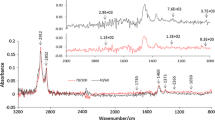Abstract
The durability of the bitumen-aggregate system is a critical factor affecting the performance of asphalt pavements. It is achieved by a careful selection of the materials based on the analysis of their compatibility and their water sensitivity. Currently, a variety of analytical test methods are used to evaluate the power of the binder to adhere to various aggregates and their susceptibility to moisture. Many of these methods are time consuming and/or require sophisticated and expensive instrumentation. The most common procedure, the indirect tensile strength (ITS) test, has been questioned by many researchers and simpler testing procedures, such as the rolling bottle test, are considered to be an indicative measure. Several studies have introduced a new test procedure, the binder bond strength (BBS) test. The test, based on the pull-off strength of the bond between asphalt and aggregate measured before after water conditioning, has shown good repeatability, reliability and the ability to determine the effects of different aggregate type, conditioning time and moisture on the aggregate-asphalt system. This paper explores the potential of the BBS test by correlating the results of test methods presently used to evaluate the strength of the bond of the asphalt-aggregate system measured with the BBS test. Four different aggregate types and a traditional bitumen were tested according to the respective European standard, including type, length and temperature of conditioning. However, the different aspects of the mixture considered in each test method determine a poor agreement of the results. Comparable levels of moisture resistance are observable only in the long term.
Access this chapter
Tax calculation will be finalised at checkout
Purchases are for personal use only
Similar content being viewed by others
References
AASHTO 2013. Determinating Asphalt Binder Bond Strength by Means of the Binder Bnd Strength (BBS) Test (Draft).
AIREY, G. D. & CHOI, Y.-K. 2002. State of the art report on moisture sensitivity test methods for bituminous pavement materials. Road Materials and Pavement Design, 3, 355-372.
BAGAMPADDE, U., ISACSSON, U. & KIGGUNDU, B. 2005. Influence of aggregate chemical and mineralogical composition on stripping in bituminous mixtures. The international journal of pavement engineering, 6, 229-239.
BERGER, E., MONISMITH, C., KWONG, J. & NODES, J. Summary Report: Breakout Session 2—Testing and Treatments. Moisture Sensitivity of Asphalt Pavements, A National Seminar, 2003. 293-301.
CANESTRARI, F., CARDONE, F., GRAZIANI, A., SANTAGATA, F. A. & BAHIA, H. U. 2010. Adhesive and cohesive properties of asphalt-aggregate systems subjected to moisture damage. Road Materials and Pavement Design, 11, 11-32.
CEN 2008. Bituminous mixtures – Test methods for hot mix asphalt. Part 12: Determination of the water sensitivity of bituminous specimens.
CEN 2012a. Bituminous mixtures – Test methods for hot mix asphalt. Part 30: Specimen preparation, impact compactor.
CEN 2012b. Bituminous mixtures – Test methods for hot mix asphalt. Part 11: Determination of the affinity between aggregate and bitumen.
CURTIS, C. W., ENSLEY, K. & EPPS, J. 1993. Fundamental properties of asphalt-aggregate interactions including adhesion and absorption. National Research Council. Strategic Highway Research Program.
FIGUEROA, A. S., VELASQUEZ, R., REYES, F. A. & BAHIA, H. 2013. Effect of Water Conditioning for Extended Periods on the Properties of Asphalt Binders. Transportation Research Record: Journal of the Transportation Research Board, 2372, 34-45.
KIGGUNDU, B. M. & ROBERTS, F. L. 1988. Stripping in HMA mixtures: State-of-the-art and critical review of test methods. National Center for Asphalt Technology Auburn, AL.
LITTLE, D. N. & JONES, D. Chemical and mechanical processes of moisture damage in hot-mix asphalt pavements. National seminar on moisture sensitivity of asphalt pavements, 2003. San Diego California, 37-70.
MORAES, R., VELASQUEZ, R. & BAHIA, H. U. 2011. Measuring the effect of moisture on asphalt-aggregate bond with the bitumen bond strength test. Transportation Research Record: Journal of the Transportation Research Board, 2209, 70-81.
NPRA 2014. Håndbok N200 Vegbygging.
SOLAIMANIAN, M., HARVEY, J., TAHMORESSI, M. & TANDON, V. Test methods to predict moisture sensitivity of hot-mix asphalt pavements. Transportation Research Board National Seminar. San Diego, California, 2003. 77-110.
Acknowledgements
This research was sponsored by the Norwegian Public Road Administration and AVINOR. The authors thank the Modified Asphalt Research Center and its technical staff.
Author information
Authors and Affiliations
Corresponding author
Editor information
Editors and Affiliations
Rights and permissions
Copyright information
© 2016 RILEM
About this paper
Cite this paper
Anastasio, S., Hoff, I., Thodesen, C.C., Bahia, H.U. (2016). Laboratory Testing Methods for Evaluating the Moisture Damage on the Aggregate-Asphalt System. In: Canestrari, F., Partl, M. (eds) 8th RILEM International Symposium on Testing and Characterization of Sustainable and Innovative Bituminous Materials. RILEM Bookseries, vol 11. Springer, Dordrecht. https://doi.org/10.1007/978-94-017-7342-3_43
Download citation
DOI: https://doi.org/10.1007/978-94-017-7342-3_43
Published:
Publisher Name: Springer, Dordrecht
Print ISBN: 978-94-017-7341-6
Online ISBN: 978-94-017-7342-3
eBook Packages: EngineeringEngineering (R0)




